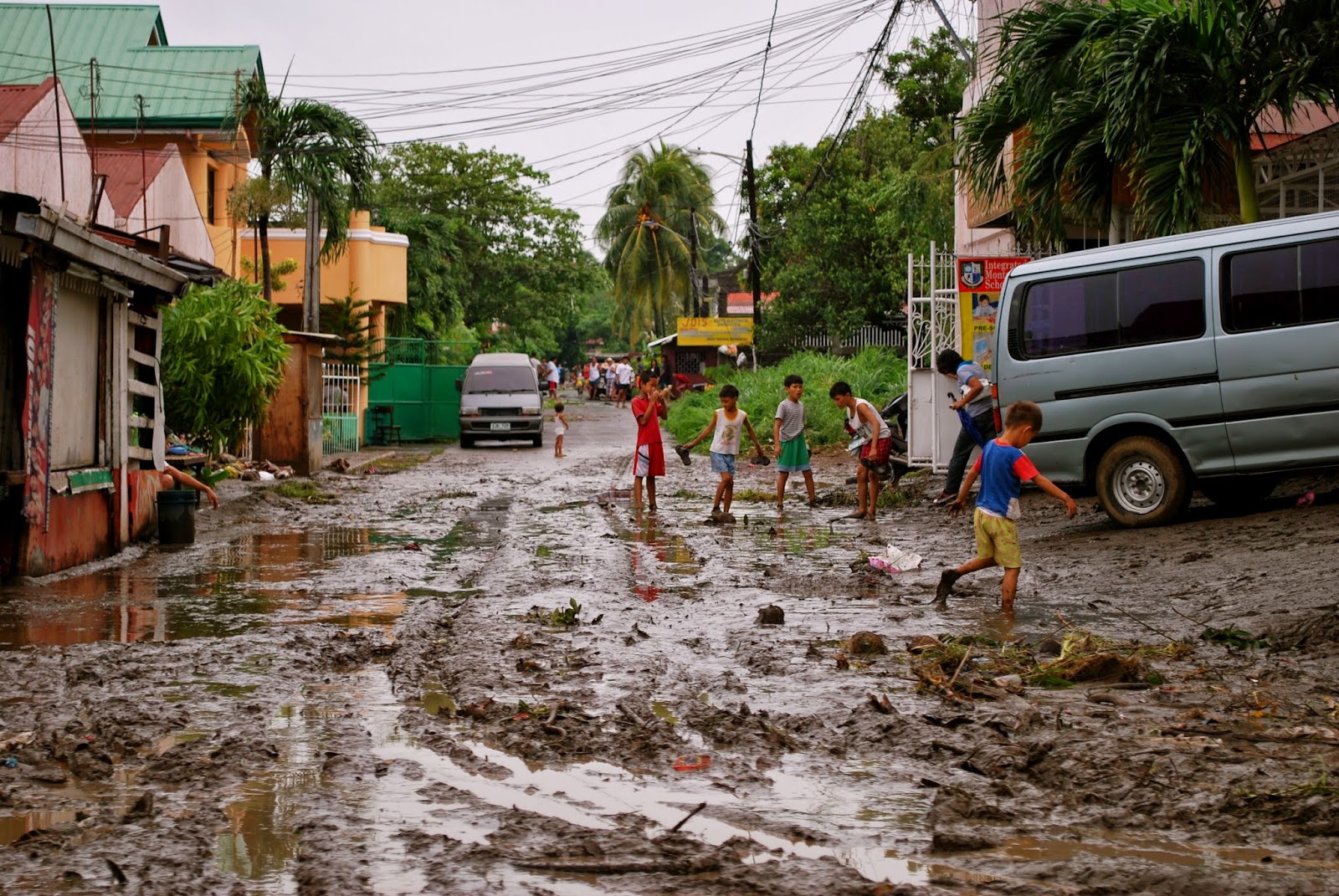After Typhoon Conson (Basyang): Calamba
Typhoon Conson is the first typhoon that made landfall in the Philippines. And what a way to start this year's storm season: the typhoon, predicted to hit Central Luzon, swerved south and hit Laguna instead! The typhoon was not along the leagues of Parna, Ketsana, or Mirinae (which ravaged Luzon one after the other last year), but it did damage the towns within its path.
After the storm, I was on my way to work when I had a chance to see what happened to my home town.
There was mud everywhere. This was taken in Barangay Halang.
The waters rose (so what else is new?) in Barangay Pansol.
And the most surprising of all: A billboard metal frame crumpled in the face of the typhoon
and punctured the roof of a nearby restaurant!
and punctured the roof of a nearby restaurant!
Sadly, this storm left the Philippines with casualties. Someone was swept in a flash flood in Los Banos (near IRRI) and his body was scooped off in Bay (near Laguna de Bay). Fishermen in coastal towns of Quezon (or Bicol?) were killed when the winds violently churned the water. People were buried under landslides (in Laguna). Road infrastructure were deemed impassable in Mindoro. Electricity was cut off in most of Luzon island.
The good thing, however, was that the public utilities and services were armed and ready to act in the aftermath of the typhoon. The electric company had restored services in 92% of the area. Water has started flowing through the mains. The army (or the policemen–I wasn't able to distinguish them) had servicemen help the residents of Pansol clean up the main road.
The new president is reprimanding the weather bureau for wrong forecasts. PAGASA gave forecasts based on the existing mathematical models. These were PREDICTIONS with maps of probable path changes. If anyone has seen the 4PM weather bulletin (when Signal No. 2 was raised over Laguna), the map showed that the storm was going through Central Luzon (the solid line) while the bubbles surrounding this line represent possible path changes over Laguna and Metro Manila.




Comments
Post a Comment
Thank you for dropping by!
Before moving on, please share your thoughts or comments about the post. :)
Thanks again!